
|
Sunday 10 February
I had a good night's sleep in the train which was about ten minutes late into Murmansk. There is a very large railway and dock installation here. I saw two steam locomotives in steam. First off we were taken for a sight seeing tour of the most northerly city in the world. Some children were having a great time on a slide. After the tour we were taken to the locomotive running shed. There were several locomotives ChS2T-364 and VL23-067 in multiple with VL23-195. The unit numbers were in stainless steel. Stirling Smith got fresh paint on his hand, it hadn't even dried. 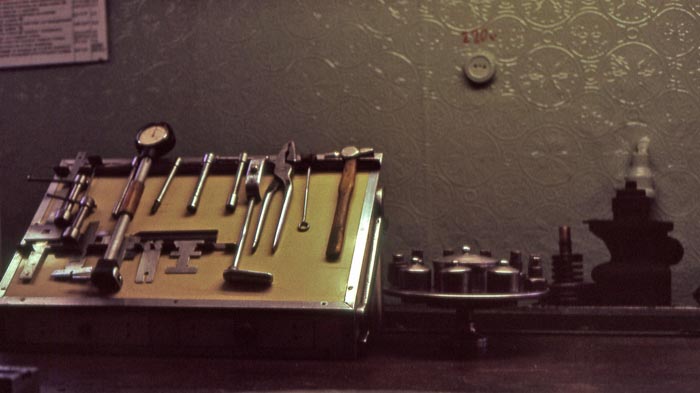 We then went to see a demonstration of snow clearing equipment and a CTC panel.  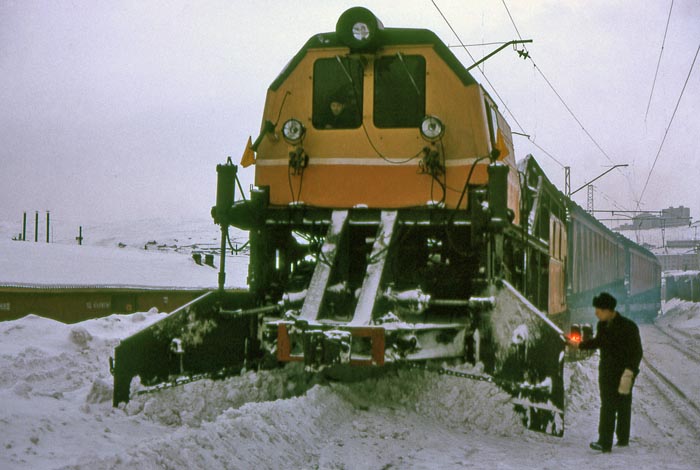 It was then back for another meal with the table groaning under the weight of the food. We presented the railway officers with a Canadian flag for their railway museum here. Murmansk is quite mild in the winter as a result of the influence of the Gulf Stream. (- It was here that I learned to refill my vodka glass with water to avoid getting drunk. I kept bottoming up and they couldn't understand how I could stay sober. -The two meals were closely spaced and I had the feeling that it was two different parts of the railway trying to impress within the short space of time available. - It was possibly not the most diplomatic thing to do to give a Canadian flag for the museum - I think Canada had a hand in the abortive move to counter the 1917 revolution with an invasion through Murmansk) Monday 11 February We spent the whole day in the train, our car came from the Red Arrow service. I traveled in the locomotive from Midvirgirgarsk to Kandabolka. There is quite a lot of room. A long handled throttle, radio, two brake valves on rhs. The only control that the second man has is a horn. The cab was very clean indeed as was the engine compartment. Rear view mirror. The sound insulation is excellent and crews can talk to each other easily. Good heating. The crew were well dressed with white shirt and black tie. The countryside was similar to Eastern Ontario with some wooden fences etc. There were many people working on the track, digging snow from around the posts each tenth of a kilometer. Received train orders from a female dispatcher. Heavy snow.  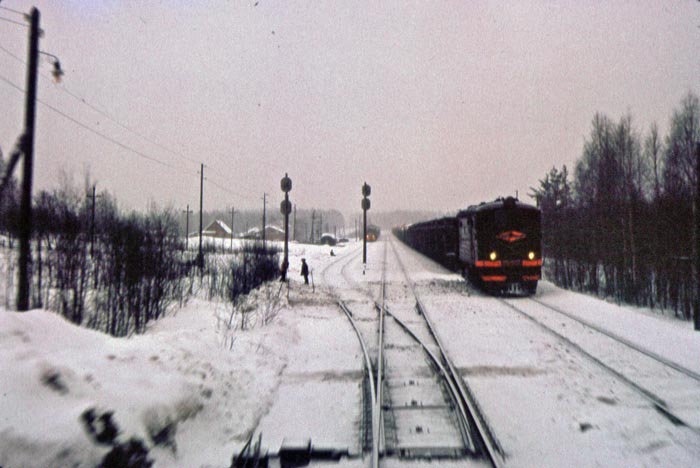 In all, we traveled about 100 km (km 560 - km 459) in about 1½ hours and passed 8 trains on 11 sidings. One steam locomotive was heading south, a 2-8-0 of the C17 class. Most of the locomotives were the single ended TE3 freight type with a TEP or two TEPs on passenger trains. The timetable is placed on a rack right in front of the engineer. We were in cab signaled territory and ran under green signals all the way. At the end of the run we ran out of the cab signaling and the aspect in the cab dropped to white. At Kandabolka we had literally to run to the other end of the train (16 cars) to get back to our private car on the rear. There was a stop at Petrozavodsk and we had a look at the rest of the train. It has only sleeping accommodation plus a restaurant car which has a good menu. We had a talk with the man on the platform. Boxes of coal are placed along the platform and the women on each car lift it in to fuel the stove for heating and water from the samovar. Each woman is responsible for the door on her car. The signal to start is given by the station master who has a short stick with a 6" white circle and black center on one end. 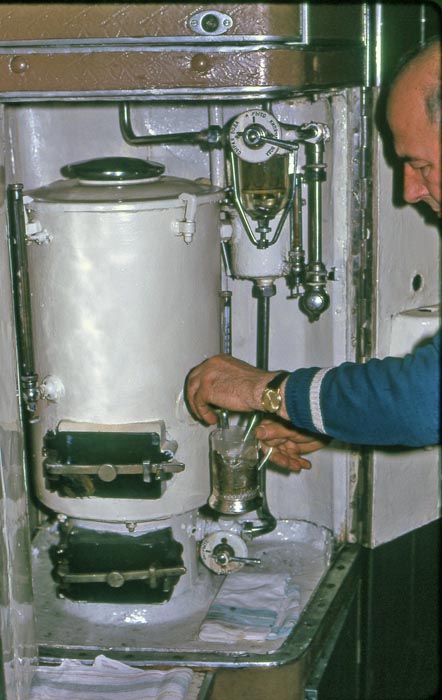 There is a samovar on each car to provide hot water for tea. Tuesday 12 February Breakfast in a hotel and then an early morning sightseeing tour of Moscow. Bridge over the Moscow River with the lower evel metro station, Moscow University with its large swimming pool, Red Square. Then out to the airport Intourist lounge and were boarded separately on the plane for novosibirsk with a stop at Kubishev. The meal was a cup of hot water with a tea bag, a cup of something sweet, a roll (no butter), a hard boiled egg, piece of cake and a slice of chocolate. We were met at Novosibirsk by the Vice President of one of the railways and given an excellent dinner while our bags were taken directly to our rooms. Wednesday 13 February We started the day with a discussion with railway officers then we went to the passenger car maintenance shop.  This four-wheeled car took us out to the passenger car shop 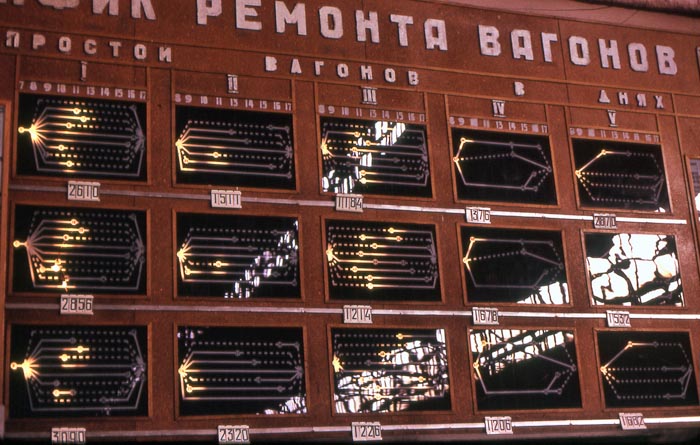 There is a good system for programming maintenance We
made an inspection of "The Siberian" a train which runs to Moscow.
There are even books provided for people to read. Throughout the
shop there was a marked absence of people working on the cars. In
fact the floor was empty. One of us happened to look up into one
of the cars under repair and we could see that everyone on the shop
floor had been put into the cars where they looked out at us from the
windows. After lunch we visited the main Novosibirsk yard which was very busy indeed. We were not allowed to photograph and the drapes were lowered in the yard control tower so that we could not see too much. It was obviously a very busy yard with electrically hauled trains passing every few minutes. From the yard we visited a switch plant. The whole experience was bizarre. It was not included in the official program we had been given and the tour was conducted under very tight security. The plant manager was very nervous and repeated several times that no photographs were allowed. After the fourth or fifth time Ross Walker got up and said, "If you don't want us to take photographs you had better look after my camera." The rest of us followed suit and hung our cameras around the manager's neck. (In those days 35mm SLRs could be very heavy). We were almost tied together and not allowed to dawdle. The seven of us had fifteen people looking at us including a character in brand new, pressed overalls. None of us had any expertise in the metallurgy of railway switches so we didn't really learn very much. This evening we visited the Novosibirsk Opera House to see a performance of Swan Lake. It is enormous with a great dome and many classical statues both inside and outside. There is a separate concert hall. We were introduced to the Assistant Director over cognac in an ante room then escorted to our seats in the front row. In the three intervals we were taken to a small museum and had two lots of sandwiches and cognac. (By this time several of our party were getting fatigued and took the opportunity to sleep - they had to be poked when they started to snore during the quiet bits). After the performance we were given cognac then taken back stage. The stage itself is circular and slopes towards the front. Behind there are rows and rows of props. The safety curtain is two large slabs of concrete which drop down and rise up across the stage. I enjoyed the performance with its familiar music but the theatre was only two thirds filled. Thursday 14 February This morning we visited the Novosibirsk Railway Technical Institute followed by a guided tour of Novosibirsk and Akademgorodog. The streetcar system uses single ended, bow collector cars with mainly women drivers.  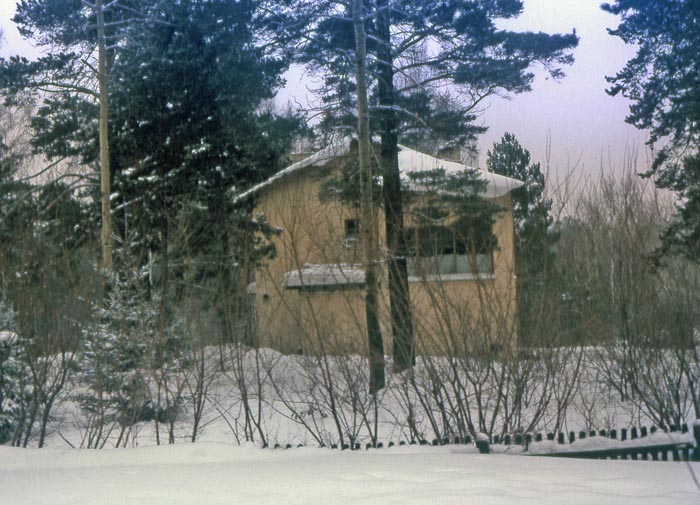 Friday 15 February We visited the Railway Information Institute and then had a wrap up meeting with Mr. Podpaly, the Deputy Minister of Railways. Lunch was at a nice hotel, 21st floor overlooking Red Square. We were given a set of records of Swan Lake by the Bolshoi Orchestra which will make a tremendous souvenir to go along with the books we were given at each place we visited. Getting to the plane was worrying indeed. We were first stuck in the elevator - twice. One of the taxis didn't turn up. We were left with an hour to check in, pay the airport tax, change our money (3/4 hour on its own), pass emigration, passport control, and weapon search. There was a very long walk to a chaotic departure lounge where we found out that the plane was 3/4 hour late. I have never been so pleased to get on a plane. The Air France stewardesses were smiling and joking. I didn't see a woman smile the whole time and the men only laughed when they had vodka in them. I mentioned this to one of the stewardesses and she replied that people say that a lot to her on this run. Saturday 16 February What a change is Paris from Moscow. I rode the turbo train from Gare St. Lazare to Caen this afternoon. 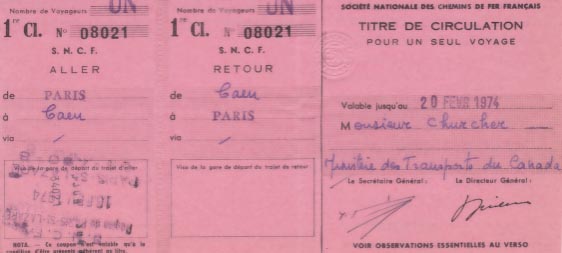  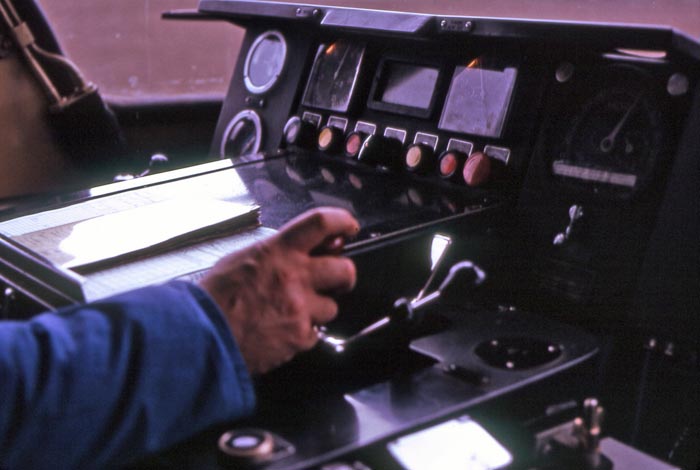 There was a last minute frantic search of a seat for me in the cab but we left Caen on time on the return. In this direction we were at the diesel end and I could feel it changing gears (eight of them). We had two four car sets with another engineer in the head end of the second set. The engineers managed to coordinate their throttles to such good effect that we were running at maximum allowable speed all of the time. The cab signal system sounds a bell as we approach the signal (crocodile). The engineer has a stand for his timetable on the central part of the control panel which is on the left hand side of the cab. There is an automatic vigilance system whereby the enginer must move at least every two minutes otherwise there is a warning which will eventually set the brake. The speed recorder is removed every five days or so. The train runs through curves very smoothly.  RTG TurboTtrain in the National Railway Museum at Mulhouse 2011 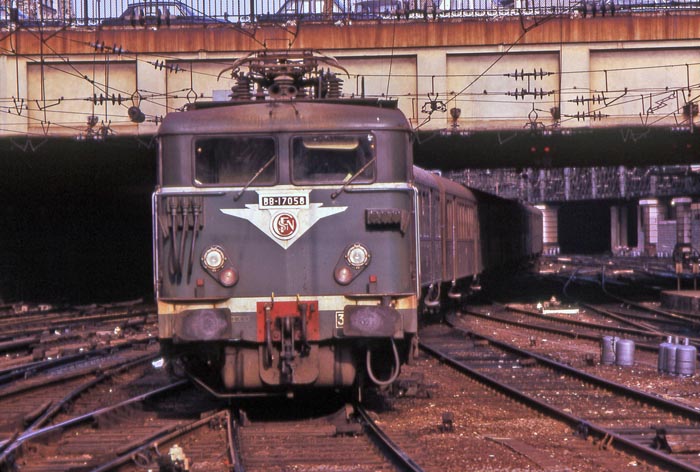 Entering Gare St. Lazare, February 1974 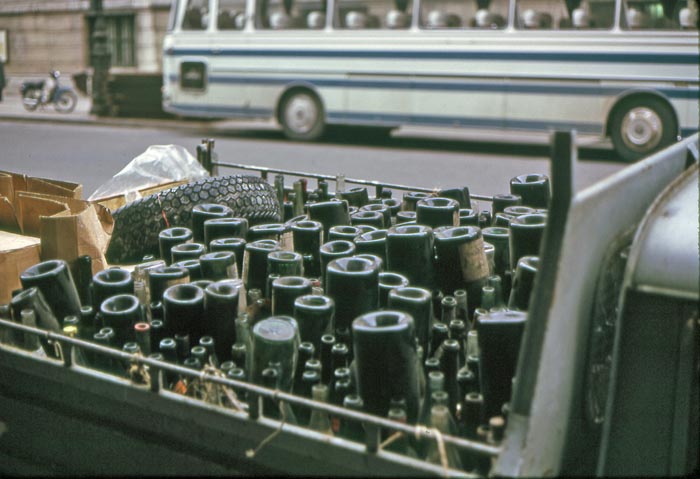 The French have a reputation for being heavy drinkers as well as the Russians. |